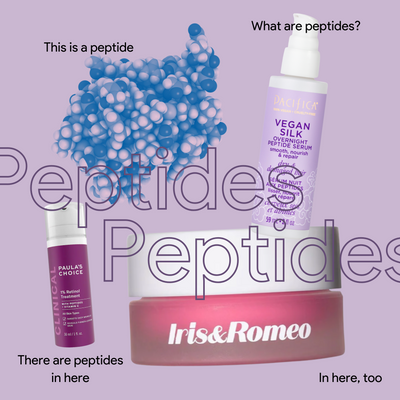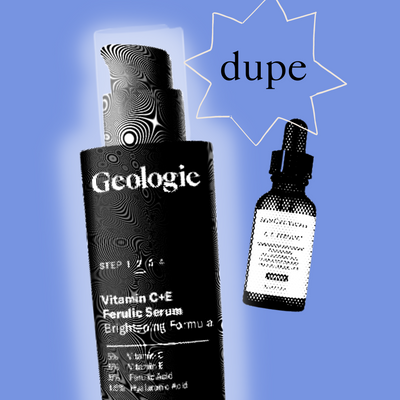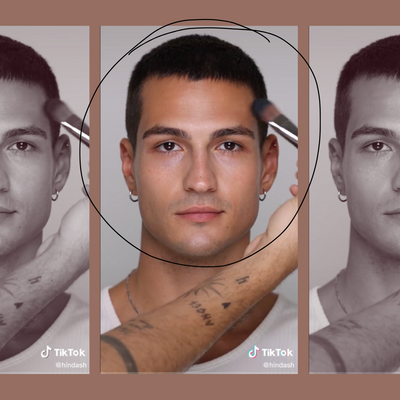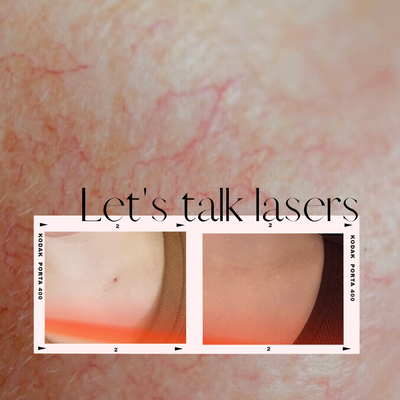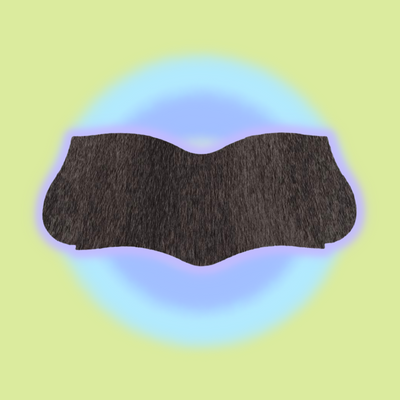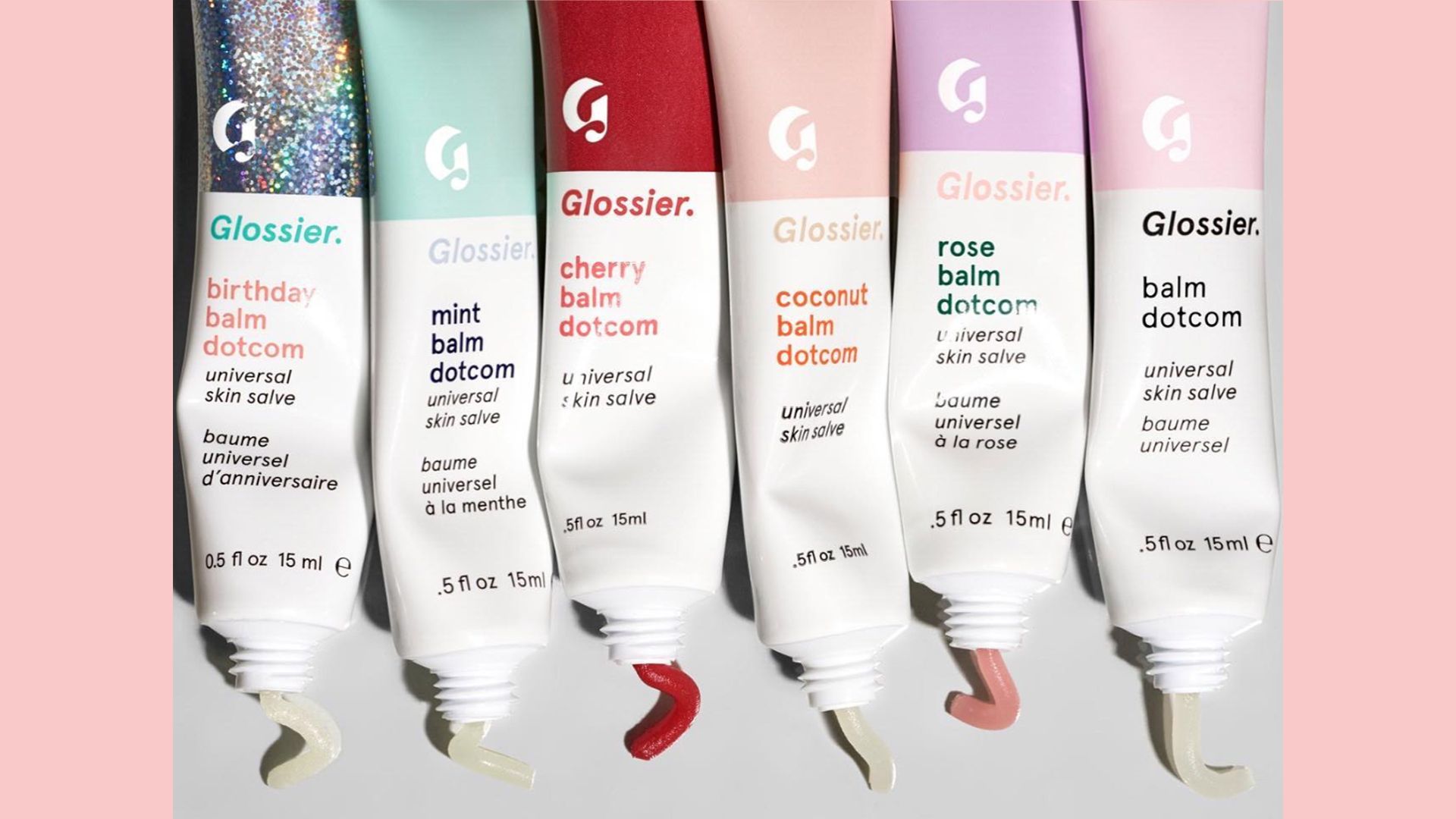
The other day I was casually perusing a subreddit discussing Glossier’s Balm Dotcom moisturizing ability.
In it, were skincare addicts who were fiercely debating the pros and cons of the now cult lip salve. While some swore that it left their lips super baby-soft, others said it did the opposite: dried it out and left it feeling worse than before. The culprit? Petrolatum, an ingredient that composes most of Glossier’s formula. While some said it was dangerous for your lips, others scoffed at the very suggestion.
So what is the real deal on Balm Dotcom and other petrolatum-based products? Is Balm Dotcom moisturizing your lips? We get to the bottom of this sticky situation. Read on!
SEE ALSO: Chanel’s Boy de Chanel review
Petrolatum vs. Petroleum
First off, Glossier isn’t alone in using petrolatum in its product. The ingredient has been used for years to treat chapped areas of the body and protecting it from outside harm. It’s super common and mostly every other brand utilizes petrolatum in its lip formulas including: Kiehl’s, Carmax, Burt’s Bees, Farmacy, Le Labo, Jack Black. Then, there are brands that use 100% petroleum jelly, like Vaseline, a brand that’s been around for decades. So what’s the difference?
Simply, petrolatum is a byproduct of petroleum and is cosmetic-grade. Meaning, it’s a product created to be more suited for skincare. And if you were wondering if petrolatum is safe, it is. According to Future Derm, the only concern that should come with petrolatum is if it’s used with irritating ingredients like lanolin, squalene, isopropyl myristate and mineral oil.
Petrolatum is also refined petroleum. Meaning, that it melts close to body temperature, allowing it to soften on application and to also turn into a water-repellent film to create a barrier against moisture loss. It’s also odorless, virtually clear, and goes on smoothly.
“Petroleum jelly plays an important function in locking in moisture to your lips and preventing further water loss,” says Dr. Y. Claire Chang, cosmetic dermatologist at Union Square Laser Dermatology in NYC. “It also sits on the surface of the lips to form a barrier against infections. Although petroleum jelly does not bind and attract water like humectants, it does play an important role in your lip skincare.”
But why TF are my lips so crusty and dry?
Unless you’ve been depleted of water for some reason, your lips shouldn’t be cracking. But if there’s general dryness, it’s completely normal. “Your lips generally do not have sebaceous glands, which are the oil glands associated with hair follicles that keep the skin moisturized and protected,” Dr. Chang explains to Very Good Light. The lips, she says, stay moisturized on their own without our natural body oil. Because of that, it can get chapped compared to other areas of the body. And so, the lips get moisture through external sources: Our saliva, water we drink and moisturizers we apply.
But for those licking their lips like they’re thirsty (figuratively and literally) remember this: “Excess saliva or lip licking can actually dry out the lips further; as the saliva evaporates, it takes moisture away from the lips,” says Dr. Chang. “Therefore, staying hydrated and applying frequent lip moisturizers are the best way to prevent and treat dry lips.”
If your lips are still excessively dry, Dr. Chang says to talk to a doctor. “If you lips continue to be severely dry with treatments, consider seeing a dermatologist to rule out other causes. Dry, chapped lips can sometimes be a sign of vitamin deficiencies, inflammatory bowel disease, fungal infections, contact dermatitis, excessive sun damage, ill-fitting dentures, or medication side effects.”
So what makes a good lip moisturizer?
To get to the bottom of what makes a good lip product, Dr. Chang broke it down in an easy manner. According to her, there are three elements needed to make a lip balm work. They include: humectants, emollients and occlusives.
Humectants – “Attract and bind water into the skin to moisturize the skin,” she says. These commonly found ingredients include glycerin, hyaluronic acid.
Emollients – “Spread across the surface of the skin to smooth the skin and form a layer of protection,” she tells us. Commonly found emollients are ceramides, shea butter, lineolic acid and stearic acid.
Occlusives – “These include mineral oil, silicones and petroleum jelly,” and provide a barrier to protect your lips from water loss. It also improves the skin barrier to also fend off infection.
Tell me, is Glossier’s Balm Dotcom moisturizing my lips?
To investigate, let’s look into its ingredient list, shall we?
First, and foremost, Balm Dotcom lists petrolatum on its ingredient list, meaning it composes of most of the formula. We have our occlusive already in there.
Then, we have castor seed oil, from the castor bean. Its a vegetable oil with fatty acids like ricinoleic acid. It’s used as an emollient and forms a solid film that has water-binding properties. So there, we have our emollient.
Moving along, we see beeswax (a good binding agent, like glue to ingredients), lanolin (which, again, could be irritating), flavor, theobroma grandiflorum seed butter, another emollient for your skin and hair, Dipalmitoyl Hydroxyproline a long name but one that actually help with collagen production, rosemary leaf extract, oryza sativa bran extract (helps with improving skin’s barrier), helianthus annuus (sunflower extract), another emollient that keeps the skin hydrated.
Looks as if the only ingredient missing from the three ingredients would be a humectant, like glycerin. While a humectant is powerful for hydration, it isn’t a dealbreaker when it comes to your lips.
So is Balm Dotcom moisturizing? Bro, just tell me.
Shop Glossier Balm Dotcom, $12, HERE!
If you don’t need a humectant in your balm, then totally! It won’t dry out your lips and has many emollient and occlusive properties that will at least hydrate it. The only thing missing is a humectant, which will bind water to your lips. But if you’re looking for a home run product, find one that has at least two or all three.
Dr. Chang’s favorites? CeraVe Healing Ointment ($9.99), CeraVe Healing Lip Balm (discontinued), First Aid Ultra Repair Lip Therapy ($12), Clarins Paris Moisture Replenshing Lip Balm ($24) “all of which contain a combination of two or three types of moisturizers.”
What to avoid? “Camphor, phenol, or menthol. While they can create a short-term ‘cool’ sensation, they can further irritate the lips,” the doctor says.
Well, there you have it! Glossier’s Balm Dotcom is a perfectly good product for your lips – but is there better? Sure. But if Glossier is making your lips super smooth, and giving you that good social media cache – stick with it.
Shop Dr. Chang’s Favorites!
CeraVe Healing Ointment, $9.99, HERE!
First Aid Ultra Repair Lip Therapy, $12, HERE!
Clarina Maris Moisture Replenishing Lip Balm, $24, HERE!


